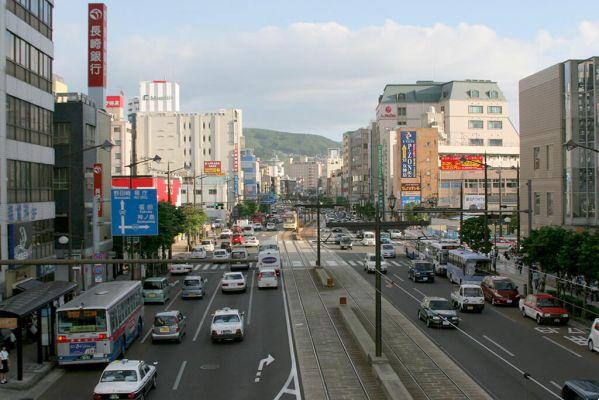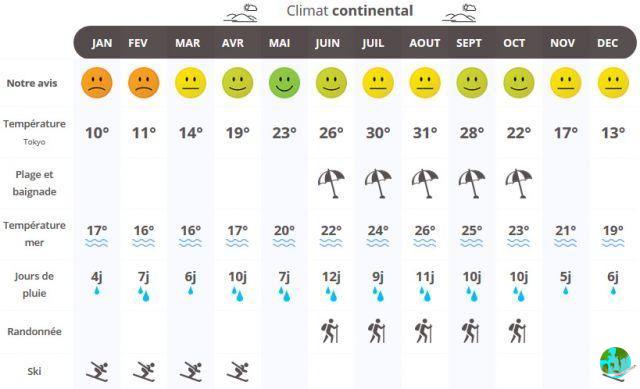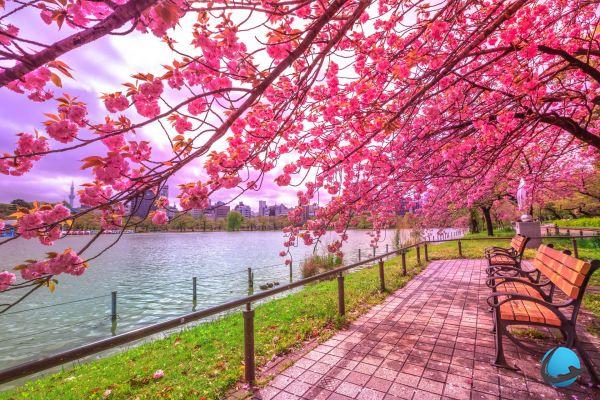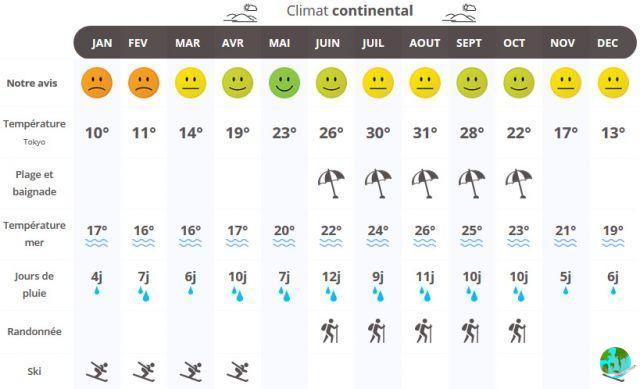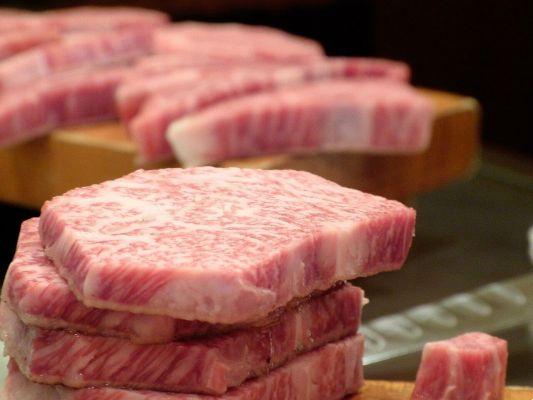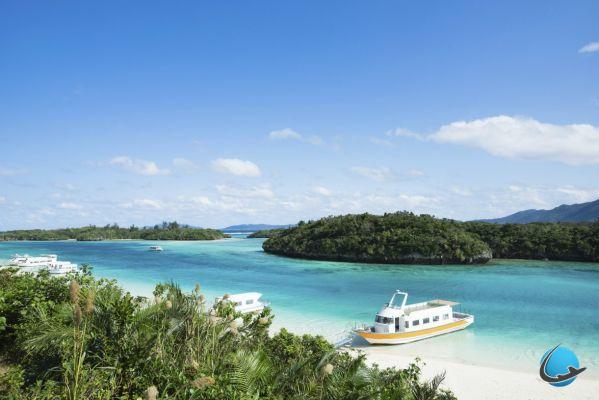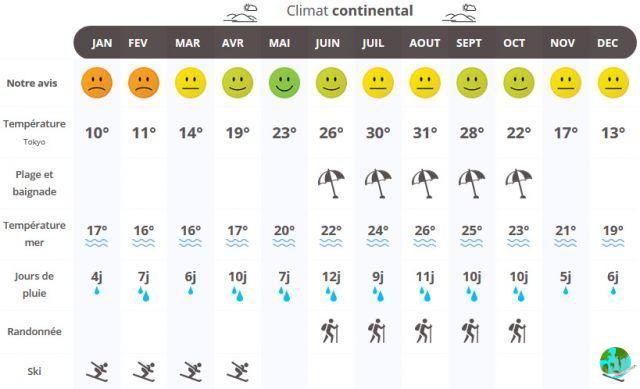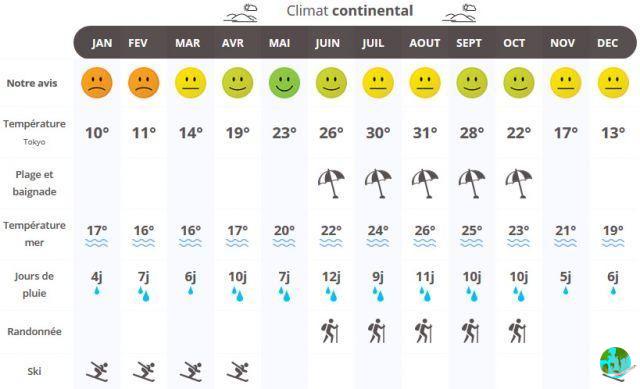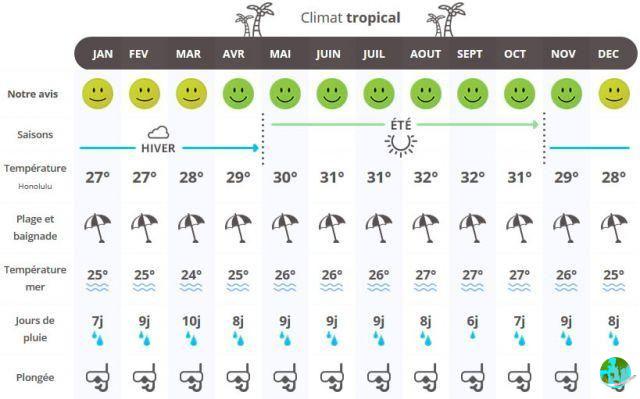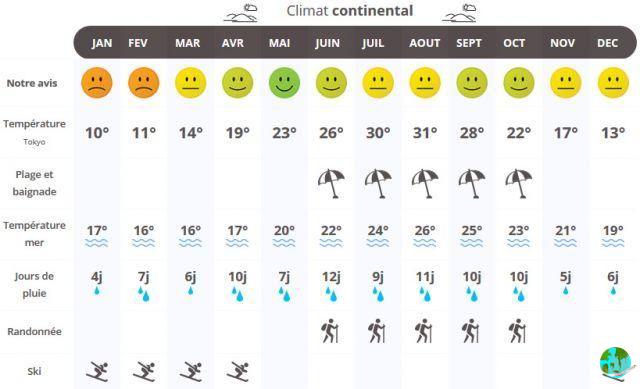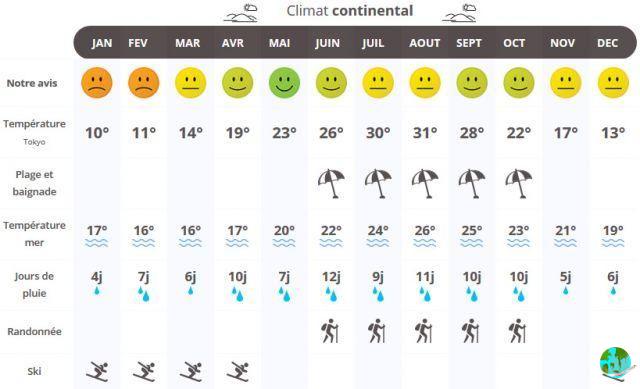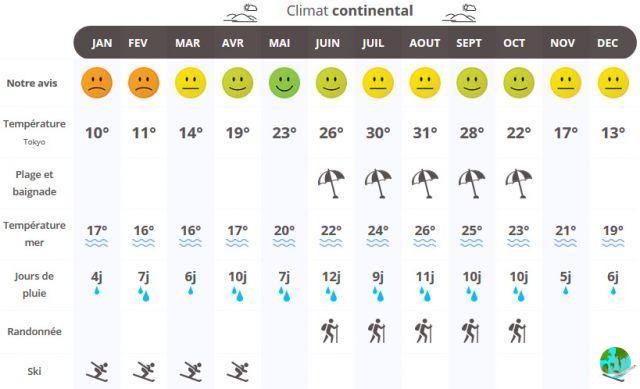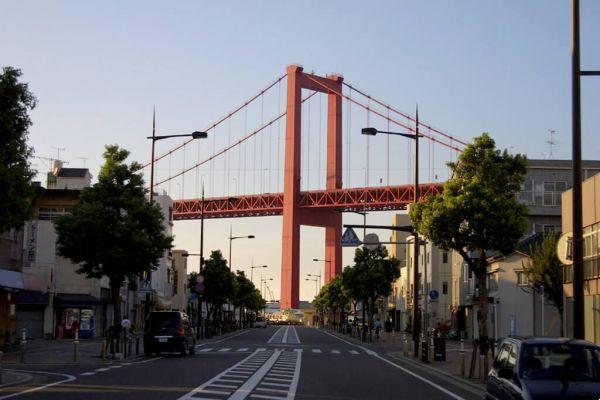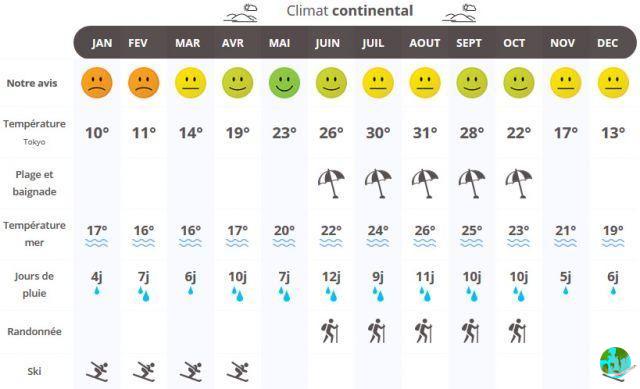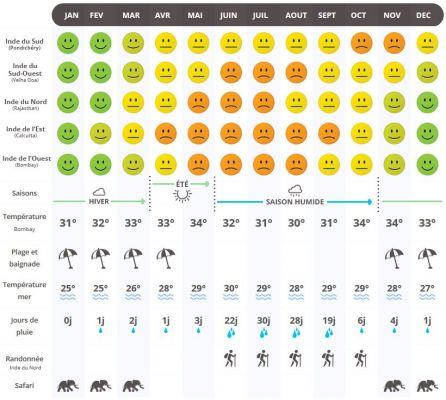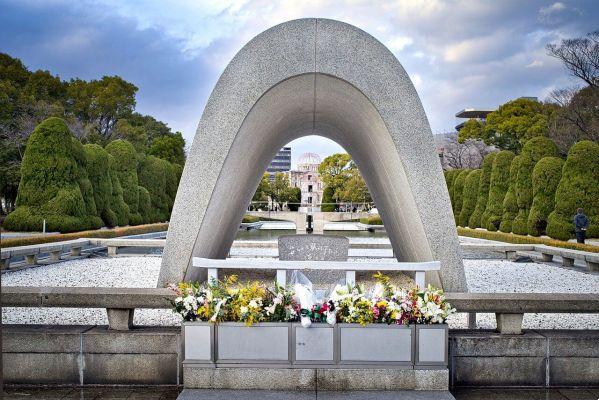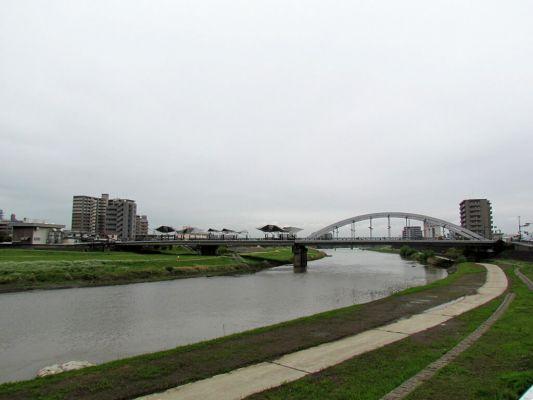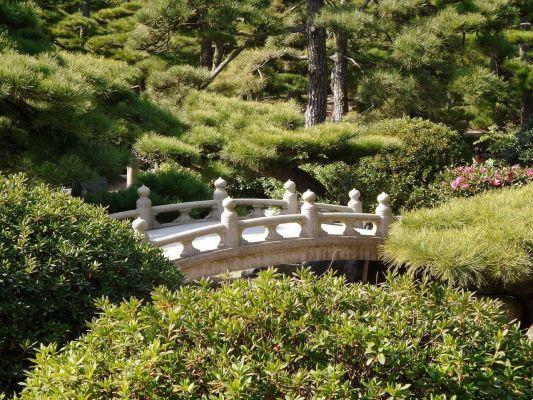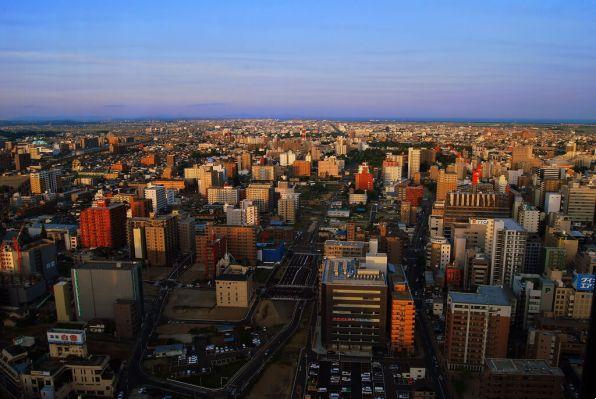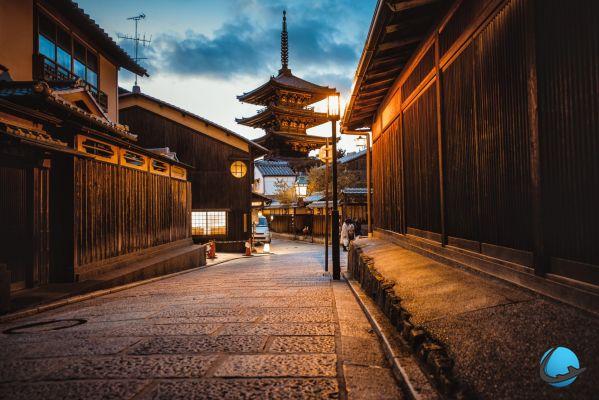
Hokkaido, Honshu, Shikoku, Kyushu: telles sont the 4 islands that make up most of the territory of Japan. The country presents a hyper-modernity thanks to big cities like Tokyo or Osaka. Corn centuries-old cultural and religious traditions are also present, like in Kyoto or Nara. Learn about popular culture, which ranges from samurai and Godzilla to the most modern video game consoles. Here are all our practical tips to know before visiting Japan!
Japan, between tradition and modernity
Land of contrasts, Japan intrigues and attracts. Brutally modern for some, this small archipelago is above all a true concentrate of history, just as rich as that of France for example. Indeed, the history of Japan is very old. Its civilization is just as important and the archipelago developed in parallel with the countries of old Europe. The Japanese are very attached to their history, which combines religion, architecture, art and philosophy.
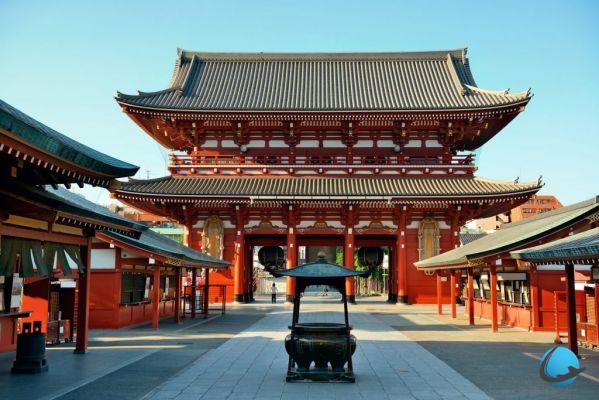 temple in tokyo
temple in tokyo
Respect for the elders and their memory has made it possible to preserve an invaluable cultural and architectural heritage, scattered throughout the country, on the outskirts of the megalopolises that have become Tokyo, Kyoto and Osaka. Buddhist temples, Shinto shrines, Zen gardens, teeming markets still exist and correspond to the image we have of traditional Japanese civilization. It's up to you to discover it among the twists and turns of modern life, which sows 8-lane highways and buildings, wherever it can!
When is the best time to visit Japan?
Japan is an archipelago of islands, stretched far from north to south. It therefore benefits from several climates, ranging from continental to subtropical. Thus, in the far north, winters are very cold and snowy, while in the far south the thermometer rarely drops below 15 ° C. The most touristic regions are on the island of Honshu, in the central part of the country. The seasons are very marked there with a climate almost identical to that which we know in France. The best times to visit Japan are therefore going to be the off-seasons.
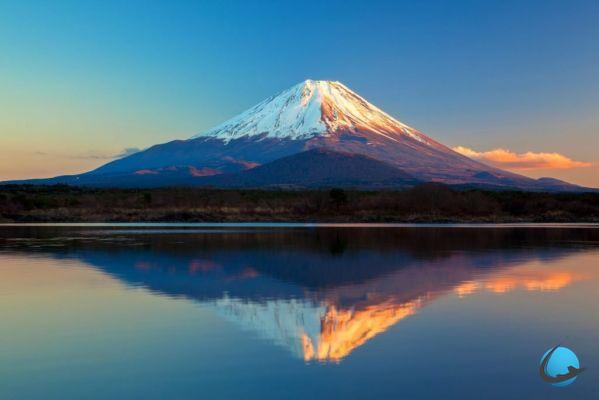 Mount Fuji
Mount Fuji
In spring the cherry trees are in bloom, the sun is shining and the temperatures are pleasant. Be careful, however, to avoid Golden Week, between late April and early May. During this week of Japanese holidays, prices soar and the main tourist sites are closed.
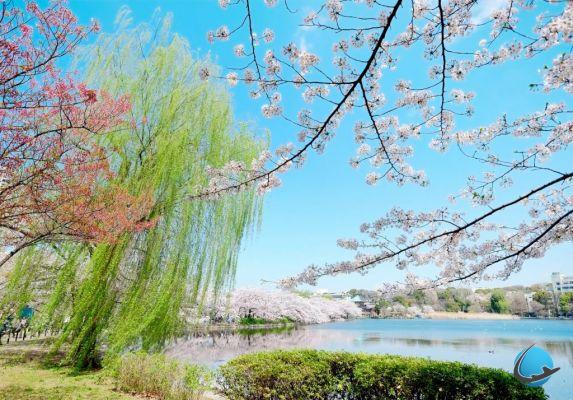 Cherry blossom in Japan
Cherry blossom in Japan
Autumn is also a great season to visit Japan.. The parks offer magnificent colors and you can easily admire Mount Fuji. In summer or winter, the climate is harsher, between strong heat, torrential rains or snowfall. But the prices are then much more affordable, whether for flights or on site.
What budget to plan on site?
The cost of living in Japan is quite expensive. Nevertheless there are important differences between big cities (Tokyo, Kyoto, Osaka) and small ones or the countryside. To balance the budget, it may then be wise to mix things up when planning your itinerary. Here is a budget estimate per day and per person to be able to visit Japan in the best conditions:
- For 40 € per day, you can travel in backpacker: sleep in a bed in a dormitory in a youth hostel, eat on the go and take some public transport. Your best allies will then be your feet to explore all the free treasures that Japan conceals: temples, parks, beaches, etc.
- For around 110 € per day, you can have more pleasures: have a private room in a hostel or hotel, use public transportation as you see fit and even bring back some super Kawaii souvenirs!
- For more luxury, count at least 210 € per day: You can then treat yourself to several nights in traditional ryokan, eat in charming restaurants, shop window and browse the museums!
How to get to Japan?
The easiest and fastest way to visit Japan is by plane. From France, count around 12 hours of non-stop flight. If you opt for a classic tour, combining the main points of interest in Japan, the ideal is to arrive in one city and leave from another. Take, for example, an outward flight from Paris / Osaka and a return Tokyo / Paris. This will save you time on site but will also be more economical. When booking click on the tab “Multi-destination journeys” on the airline's website in order to get the best options.
If you want to travel in the most comfortable way, Air France offers a daily A380 flight, for a price equivalent to other planes: the seats are wider, you will have more legroom and the vibrations are more discreet… The best way to rest and be able to make the most of it once there!
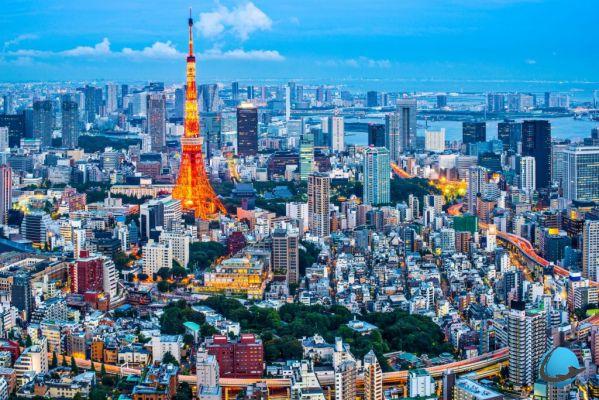 Tokyo in Japan
Tokyo in Japan
If you have time and you dream of living an extraordinary experience, know that you can also go to Japan by train! To do this, you must first go to Moscow on the Paris-Cologne-Warsaw-Moscow line (allow a 20-hour journey). Arrived in Moscow, climb in the legendary Trans-Siberian to reach Vladivostok. This journey will take you 6 days! You can then take the ferry to Takaoka, the port of arrival to finally visit Japan.
How to get around the country?
To visit Japan, the best way is to travel by train. The network is very important and they are always on time! The JR (Japan Railway) network is the densest and serves the main islands of Japan, to which are added many private companies. The flagship of the train network, the Shinkansen (the equivalent of our TGV), offers many connections between major Japanese cities. With its futuristic rocket look and legendary comfort, it offers travelers an unforgettable experience!
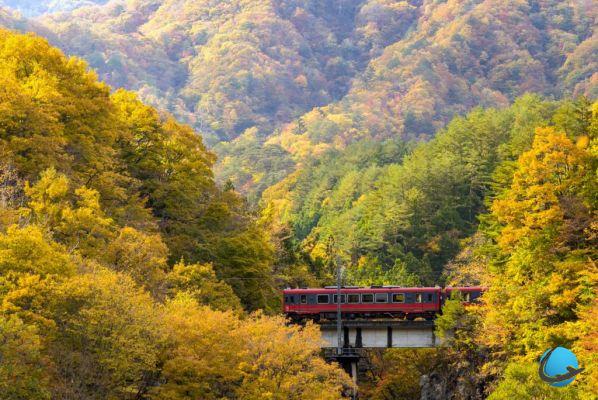 A train traveling through Japan
A train traveling through Japan
Depending on your itinerary and the time you have available to visit Japan, it may be worth taking a JR Pass. This card will give you unlimited use of all JR network trains (including Shinkansen, except Nozomi and Mizuho), airport shuttles and metro in major cities.
To complete the train journeys, you can also take the bus or taxi. To enjoy the cities, your best allies will be your feet: do not hesitate to get lost in the alleys to be able to appreciate all the charms of the country! Bike rental can also be a good option, most Japanese cities are flat and traffic is smooth and safe.
Renting a car, on the other hand, is a complicated solution.. Driving is on the left and most signs are written exclusively in Japanese. To make matters worse, if you want to drive in Japan you will need to have your driver's license translated into Japanese.
Where to stay in Japan?
There are many accommodation solutions in Japan, but your choices will mainly depend on your budget. The cities are very large, always plan take accommodation near a metro line or a train station. This will allow you not to spend too much time on unnecessary trips. Here are different solutions you can consider to visit Japan:
- Sleep in a youth hostel: this is the most economical option, even if you choose a private room. In addition, you will usually have access to a shared kitchen for preparing meals.
- Take a hotel room : More comfortable with, in general, a breakfast included.
- Rent an apartment or a house: The opportunity to live like the locals, with real autonomy and more privacy than in a hotel.
- Spend the night in a traditional Ryokan: a typical Japanese experience where you can sleep on a futon in a charming environment.
- Test unusual accommodation: capsule hotels, love hotels, etc. The Japanese are crazy about it! You will find “capsule hotels” for example in large cities like Tokyo. There is also accommodation in Buddhist temples in Kyoto or Koya. An excellent solution which nevertheless requires knowing the habits and customs of the lifestyle of the least and reserving your room in advance.
What are the gastronomic specialties of Japan?
In addition to offering a varied and exotic heritage, Japan is a country renowned for its gastronomy. A trip to Japan is first and foremost an opportunity to discover the real flavor of sushi and sashimi, which have little to do with those now found by the hundreds in European restaurants.
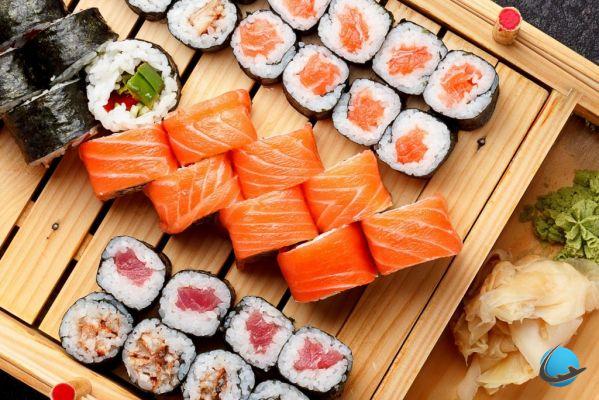 Japanese gastronomy
Japanese gastronomy
In the heart of big cities, the Japanese are crazy about noodles, the “râmen” that they taste in small stalls at the edge of the streets. Japanese cuisine is also readily complemented with spices such as wasabi (very spicy), ginger or horseradish (from the roots). More than just a drink, tea is a way of life in Japan and its consumption, in its traditional form, is the subject of a veritable rite.
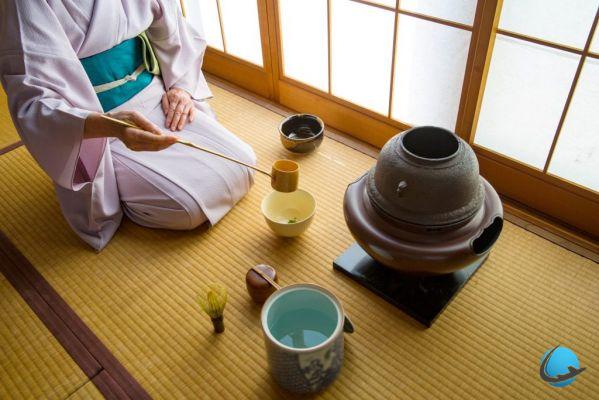 The tea ceremony in Japan
The tea ceremony in Japan
Green tea, the most drunk, is drunk anyway during each meal (Japanese restaurants almost always serve it) but it can also be tasted by visiting certain temples and attending the preparation ceremony in Kamakura, at the Hokoku-ji temple for example.
Japanese culture and history
What if Japan had entered the collective imagination of young French-speaking generations thanks to the mass distribution of Japanese cartoons in the mid-80s? In part, certainly, and the current success of manga cannot be ignored either.
If Japan is so fascinating, it is therefore both by its remoteness and the dose of mystery that goes with it, but also by the richness of its history. Tumultuous, it dates back to the XNUMXth century BC and remains marked by the reign of several dynasties of emperors, shoguns (military leaders), armies of samurai, Buddhist and Shinto influences or more recently military occupations and the atomic bomb.
Modern cities for shopping in Japan
Where to start if you are addicted to shopping? Probably by visiting metropolises, because international flights arrive in Tokyo, the capital. Japan is the country of high-tech and the omnipresence of video games, electronic gadgets or neon advertising panels in Tokyo or Osaka proves this. A shopper's dream! They will be sure to take advantage of visiting Japan for equip oneself in the many Japanese shops, the latest from Samsung or the popular robot from Sony.
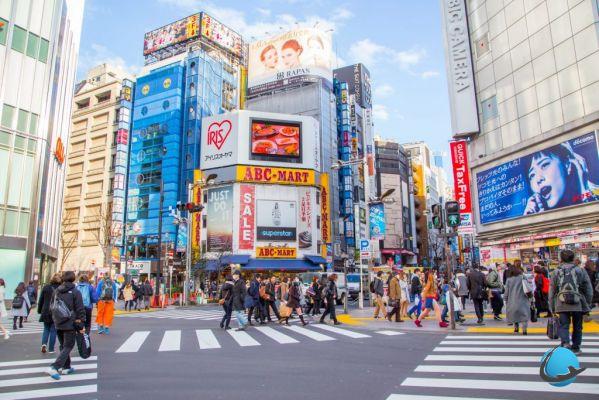 Shopping in Tokyo
Shopping in Tokyo
What are the visits to do in Japan?
There is so much to visit in Japan! Here is our small selection of 3 stages and its essential visits:
The Buddhist temples of Kyoto
Once the passage in order by the box "purchase" made (which it is also good to do at the end of the trip so as not to be too crowded), it is time to explore ancient Japan, of its temples and its culture. Starting with Kyoto, the former imperial city, located on Honshu Island like Tokyo. The city has in particular the temple mounted on stilts of Kiyomizu-dera, the temple of Gold Kinkaku-ji or Silver Ginkaku-ji, but also an imperial castle, that of Nijo-jo.
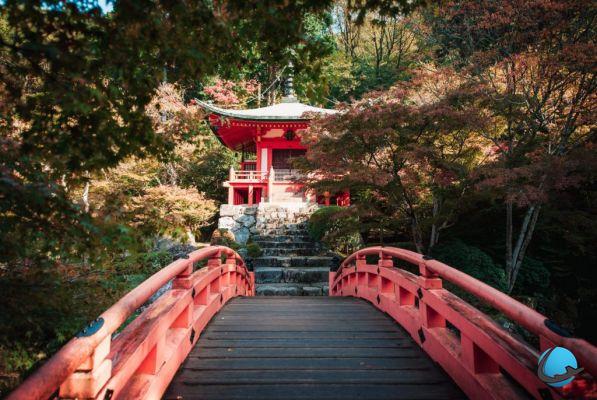 Daigoji temple in Kyoto
Daigoji temple in Kyoto
Meditate in Hiroshima
Also on the island of Honshu - which is nevertheless the largest in the country - is the city of Hiroshima, theater of the dropping of the first atomic bomb on August 6, 1945. Completely rebuilt after the bombardment, the city of Hiroshima then had only a few buildings still standing, including one that it kept to make a mausoleum: the Atomic Bomb Dome. Not far from there, the authorities have set up the peace memorial park and the “Peace memorial museum” in order to pay tribute to the 200 victims.
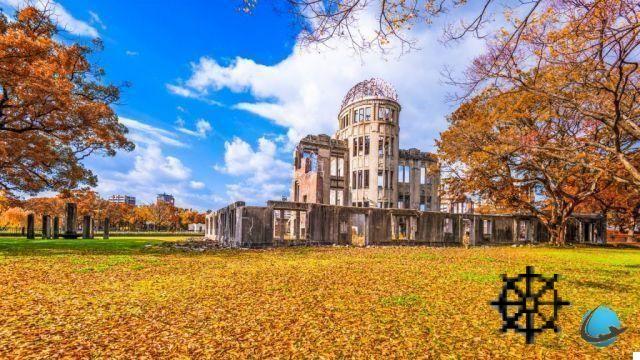 Hiroshima Dome
Hiroshima Dome
Don't leave Japan without seeing Mount Fuji
Finally, before returning to Tokyo to take the return plane, do not hesitate to make a detour to the southwest of the city in order to approach the slopes of venerable Mount Fuji. If possible, the best time to discover it is spring because the cherry trees around are in bloom.
READ ALSO :
10 must-see places to see in Tokyo
Itinerary idea in Japan
You will understand, Japan must be earned. The hectic life of this small plot of land hides its treasures. The Tokyo region is the best example. A few kilometers from the ultra-modern center and the buildings, we discover wooden houses, religious temples as well as incredible natural sites.
To find authenticity, you have to go to the mountainous center of Japan, little affected by excessive construction. AT Kamakura for example, do not forget to visit the great Daibutsu Buddha, a colossal stone statue which has reigned unmoved since 1252. A little further near Kyoto, you will admire the famous Japanese zen gardens, variations of stones, gravel, brought together in harmony and conducive to meditation.
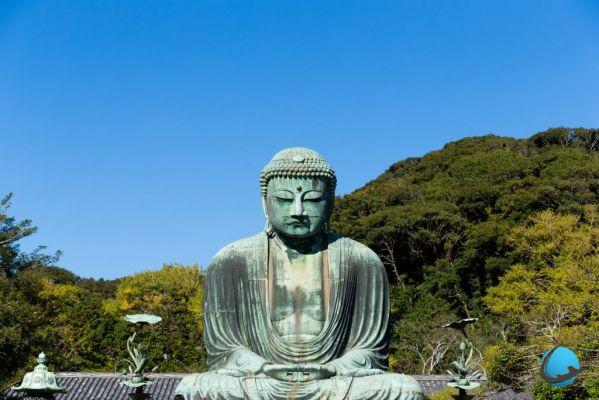 Le Bouddha Daibutsu
Le Bouddha Daibutsu
Nature reclaims its rights over l’île d’Hokkaido where we still live from fishing and the cultivation of seaweed. The harsh and cool climate preserves lush nature. There are also beautiful parks housing temples and statues from various eras. Change of scenery after passing through the country's megalopolises!
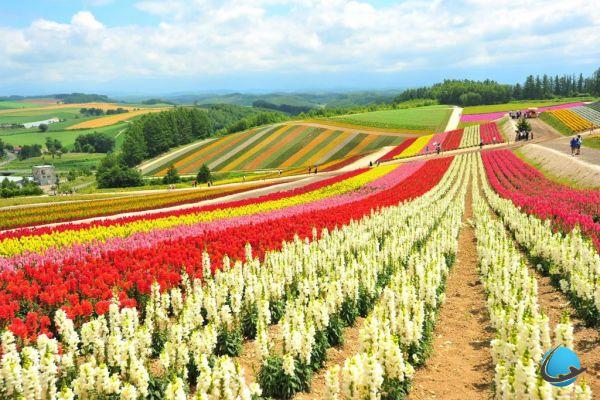 A field of flowers in Hokkaido
A field of flowers in Hokkaido
Useful information
Want to go and visit Japan? To make your stay a success for sure, we provide you with our practical information!
- Formalities: For French, Belgian or Swiss citizens, a visa is not necessary for a stay in Japan of less than 3 months. Only a valid passport will be required to enter the territory.
- Cash : The Japanese currency is the yen (¥)
- Health : Be up to date with your vaccinations and plan to get the Japanese encephalitis vaccine if you are going to a rural setting.
Are you going to visit Japan soon? Discover all the visits to do in Tokyo or Okinawa. Also share your tips in the comments!




